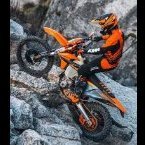

CharonY
Moderators-
Posts
13547 -
Joined
-
Last visited
-
Days Won
159
CharonY last won the day on April 3
CharonY had the most liked content!
About CharonY

Profile Information
-
Location
somewhere in the Americas.
-
Interests
Breathing. I enjoy it a lot, when I can.
-
College Major/Degree
PhD
-
Favorite Area of Science
Biology/ (post-)genome research
-
Biography
Labrat turned grantrat.
Retained
- Biology Expert
Recent Profile Visitors
85534 profile views
CharonY's Achievements

SuperNerd (12/13)
3.3k
Reputation
-
They wrote a beautiful letter....
-
In a narrowly defined topic, for sure. Take medical health experts and ask them whether there is a net benefit of population-wide measles vaccination in terms of overall health burden, you will get very clear answers from actual experts. The reason is that this question is a) anchored on a set of metrics that are well defined (health burden is perhaps a bit vague but is used here as a proxy of a whole range of measures that can be used) b) is based well-understood mechanisms, and c) has a host of both, research as well as empirical data that clearly point at a conclusion. This is not a good example of an attempt at a very narrow space. The issue here is "success". You could instead ask the question: how do tariffs impact aggregate wealth? This could result in much more targeted arguments. Also, while I do not have specific expertise, I doubt that there are many economists who would argue that broad tariffs are somehow going to increase aggregate wealth. The negative impact on the economy are fairly well-known but I have not seen an honest argument how it would increase wealth. Also, things are usually not a just a simple pro and con, but about what possible mechanisms are there and what the impacts of these issues are. As mentioned already, the more we know, the easier it is to form a consensus. There is no good reason to assume that a consensus can never be formed, we have in fact many of those.
-
No, even worse, they equal 1. I.e. they are not doing anything. I have criticized that a bit off topic in the other tariff thread (which presumably was not really on tariffs). They had this whole page rambling on and ultimately what they say is that we calculated the trade deficit and multiplied it by 1. But to appear clever they chose add two constants which cancel each other out. I did not pick up on the fact that they might have used LLM to do that, I chose to assume stupidity. But again, it seems that we have to multiply stupid with the laziness factor. And unfortunately they do not cancel each other. That is not the case- everyone, including areas with no human populations got a flat 10%.
-
I think you should take a step back and take a broader view. It is a bit speciest to dismiss the work of a whole group of folks, just because they lack opposable thumbs, or articulating fingers. Also, I assume that sardines are a perfectly culturally appropriate way of compensation, even if not regurgitated. Listen, the world is global, no to ways around it and it is unfair to dismiss the ability of someone just because of SQUAWK, sorry, I mean cultural differences. Except leopard seals and orcas. Can't trust those bastards.
-
Considering that the majority of discussions you found point to an anti-tariff slant, doesn't it suggest that for some topics there is, in fact, consensus? I.e. if there is little contra it is likely that there are simply no good models to support it. That is ultimately how consensus look like. If that is not what you are looking for, could you elaborate?
-
https://www.nature.com/articles/s41586-025-08800-x As the title of the study suggests, researchers found evidence that shingles vaccine might delay or prevent dementia. It is based on prior work which have found that herpesviruses might be implicated in certain forms of dementia. The study also found evidence that beyond the virus there might be some modulation of the immune response that could contribute to dementia protection.
-
Isn't it great? We now have an natural experiment where we got two variables in one go! I would argue that the midterms are a critical milestone. If the voters decide to keep empowering Trump, the US has truly fallen into autocracy and fascism. I would agree that the existing systems have shown to crumble by the power of not caring and this might open the door to other extremists. That being said, I suspect that being not stupid really matters if there are levers left that need to be manipulated. If, for example the GOP cruises through the midterms despite all the visible and tangible harms they have been doing, you could put a wet Mentos in charge and folks would continue to run any evil agenda they might come up with to feed the mob.
-
It is getting a bit off-topic here, but the tariff announcements by the administration demonstrate to me an incredibly lazy approach that basically just assumes that all trade deficits are caused by tariffs and other forms of "cheating". The way they justified their methodology is eerily close to what students do if they want to appear clever without really investing time into understanding the issue (and extensive use of LLMs). Just look at the stupid long explanation https://ustr.gov/issue-areas/reciprocal-tariff-calculations. Looking at the equation it is clear that they did nothing more than calculating the trade deficit (with constants selected to not influence the calculation, i.e. being 1). The US tariffs are therefore nothing more than half of the trade deficit, a calculation that an aide might have done in their coffee break. Going back to OP, discussing this level of stupid among experts would likely result in derision for the lazy methodology, simply because the justification is so convoluted (and ultimately wrong), just to appear clever. My guess is that a group of educated economists would just feel at least mildly insulted when faced to discuss the implementation of US tariffs. The US is crashing the world economy because of vague ideas and being too lazy to actually read up on them.
-
To be fair, this thread is about free speech. We should add another for trampling habeas corpus or perhaps just generally trampling on rights and the constitution. But I do agree, the outcry of vanishing someone into a foreign prison, blatantly admitting to the "error" (referring to the person who was known by ICE to be in protected status) and then refusing to remedy the situation by bringing it back is rather disheartening. There will be more "errors". Already, I have colleagues living in the US either as greencard holders, but also dual citizens who are very afraid to travel. And those are generally well-recognizable and comparatively privileged folks.
-
! Moderator Note This is a discussion forum, not a blog. Thread is locked as there are no attempts to initiate a discussion.
-
I think it is again a situation where both elements apply. It is stupid, but there is also a vague idea behind it. On the least ideological side there is simply the desire to keep the fires of culture wars going. It has given right-wing politics a huge boost and they want to keep that in addition of other emotional issues, such as immigration, nativism, and so on. Folks like Bannon have openly mentioned that as a key strategy before the first administration. In addition, they have realized that breaking up shared realities is incredibly powerful to get rid of any accountability (fake news, luegenpresse, etc.). This effectively neuters media and public control. Institutions that are involved in fact-finding include courts (and we see ongoing assaults there) but also universities, where one of the goal of research is to understand complex and intricate issues. This can lead to political undesirable facts. This includes issues like climate change, evolution, vaccines, but also sex and gender, which is used as a wedge issue to discredit other of science. It doesn't really matter in that context whether the mice are transgenic or transgender (especially as one could manipulate hormone receptors and observe developmental changes....). There is a concerted effort to replace deep understanding with "common sense", i.e. just replace it with things that feel emotionally true and can be whatever folks want. Thus, scaring institutions involved in fact-checking into compliance provides control and further removes accountability. That is pretty much what for example the Soviets did. I am sure that they are doing that in stupid ways and many of the folks involved are genuinely stupid. But I don't think that there is no intent behind it as a whole. I think of it as an emergent property of stupid and malicious hunger for power.
-
And this shows that LLM are not necessarily very good in providing clarity, despite their claim of doing so. I think there are economic folks are telling him that broad tariffs generally speaking are a bad idea. However, in his inner circle there are also proponents for tariffs. Looking at Project 2025, there is for example Navarro who proposed reciprocal tariffs to balance trade and apparently he believes that it has the potential to move supply chains back to the US. I assume that TFG hears this various opinions and since he is generally not able to synthesize information well, he is going just to pick and choose parts that he likes. Which then results in a haphazard implementation that looks amateurish.
-
I am mostly with MigL on this one but I would add two more stipulations. One, which can be tricky in today's atmosphere, is that folks are going to discuss in good faith. This is fairly common in scientific conferences and roundtables and expert panels, where at least quasi-consensus can be reached. This does not meant that there is a singular answer that all can agree on, but rather there is a consensus regarding the current state of knowledge regarding a particular topic, frequently with a list of open questions, areas of uncertainty or disagreement and knowledge gaps to be addressed. In these contexts, experts basically outline their viewpoint and tend to calibrate it with additional information gained by the other experts on the table. However, with a random assortment of folks who just happen to have expertise in the area, but might have different motivations (e.g. if someone works for the government and doesn't want to get fired), things may be different. The second is basically what I mentioned above already, and is related to how well a system is understood and what degrees of freedom the question offers. If the question is broad (like the overall impact on the US economy) there is likely going to be a clear consensus on immediate and well-understood effects (e.g. increase in consumer pricing), probably more variability in areas with less data (e.g. how will individual companies react in the long-term) and so on. Also, the more granular the answer is supposed to be, the less consensus is likely as often detailed knowledge is needed. For example, tariffs can increase competitiveness for domestic manufacturing based on standard models, however, it might not be true in all industries which could be specialized knowledge. And again, I think that certainty depends less on the format of discussion, but how well a system is understood in relation to the question under discussion.














